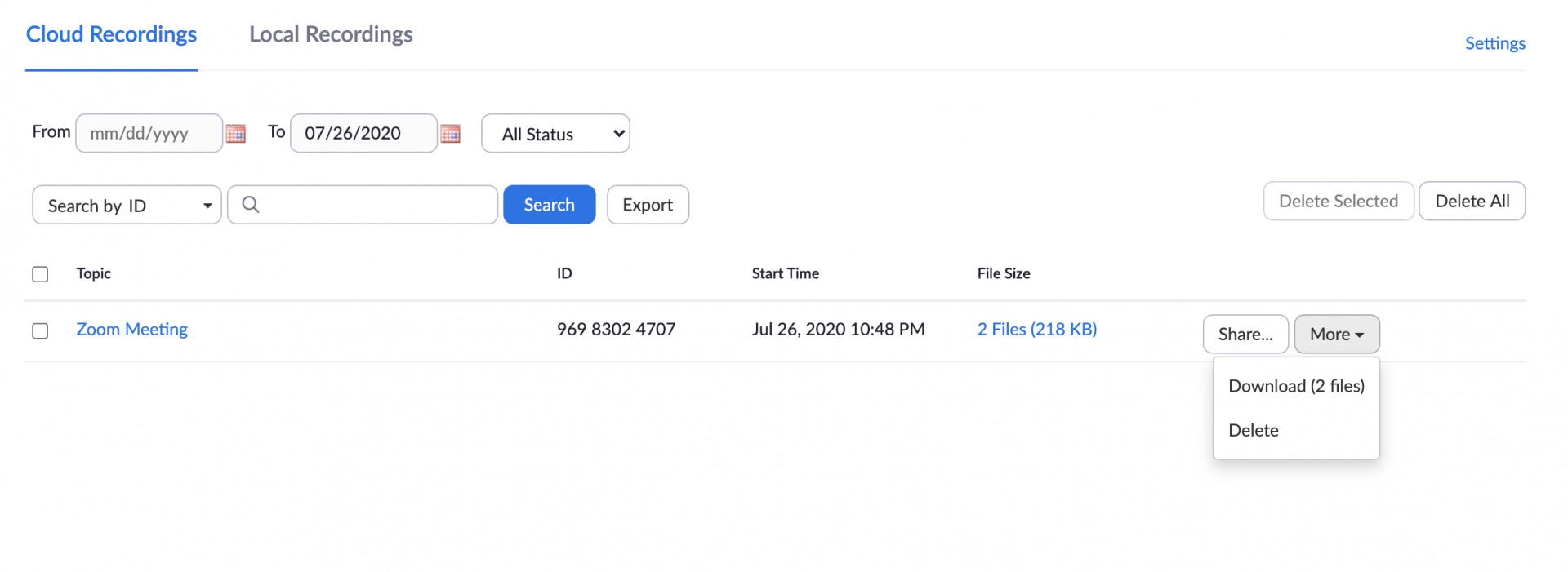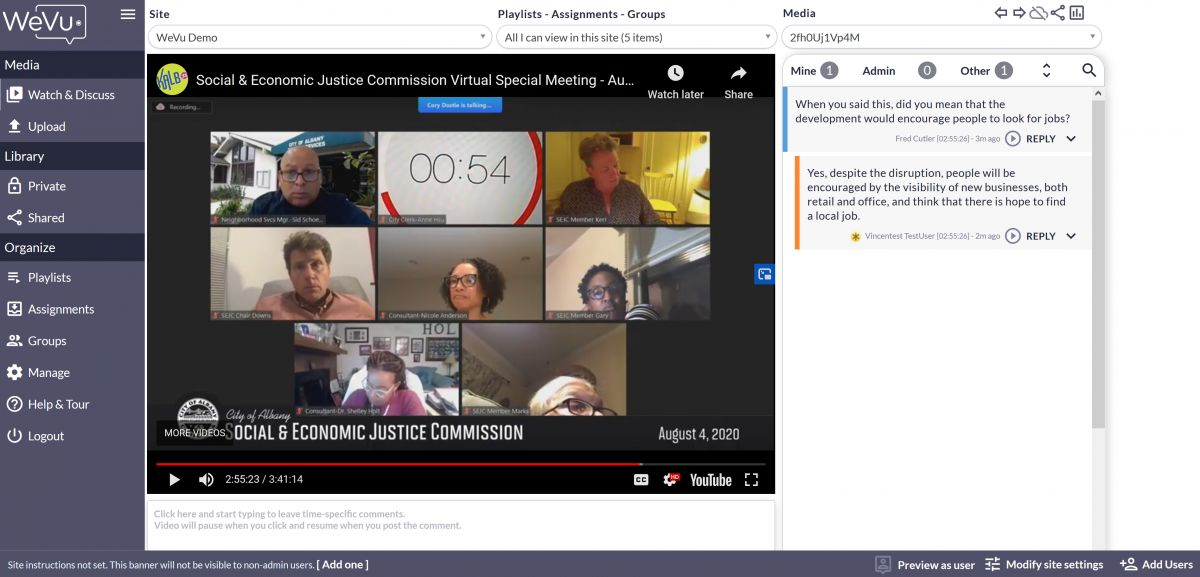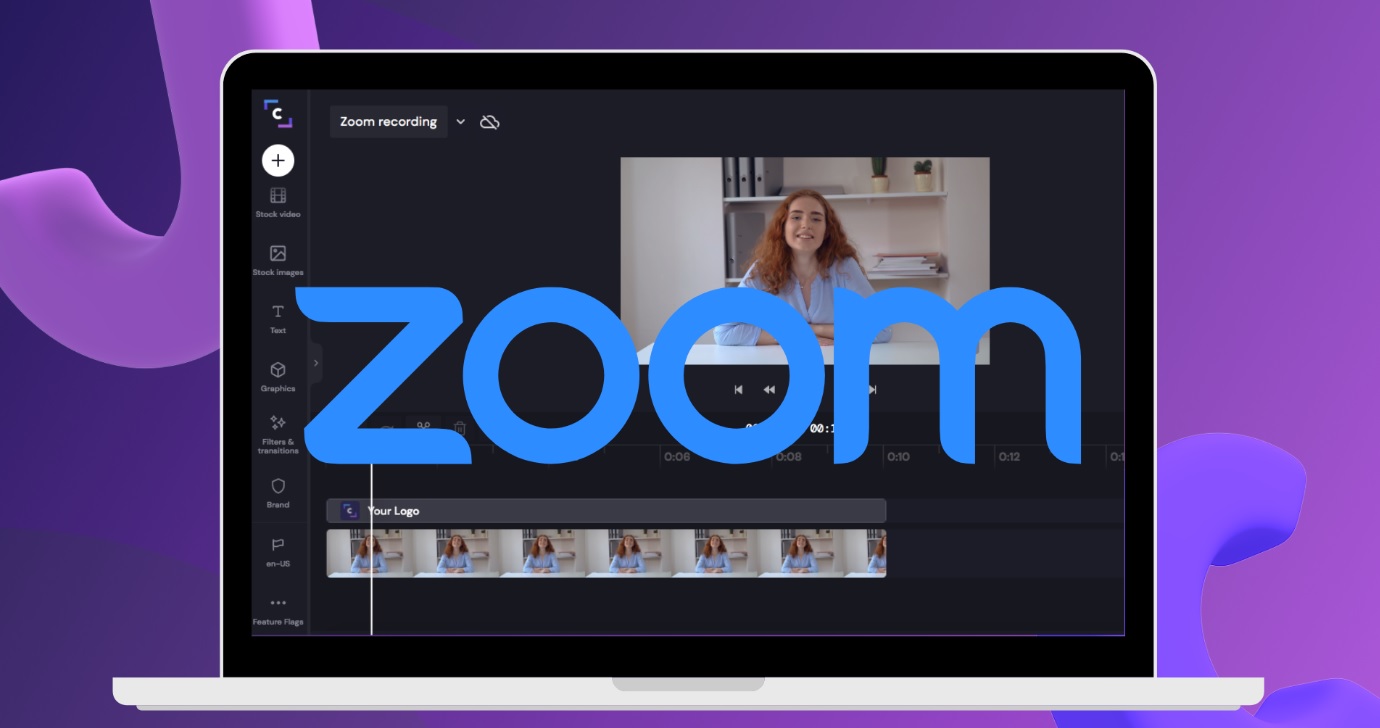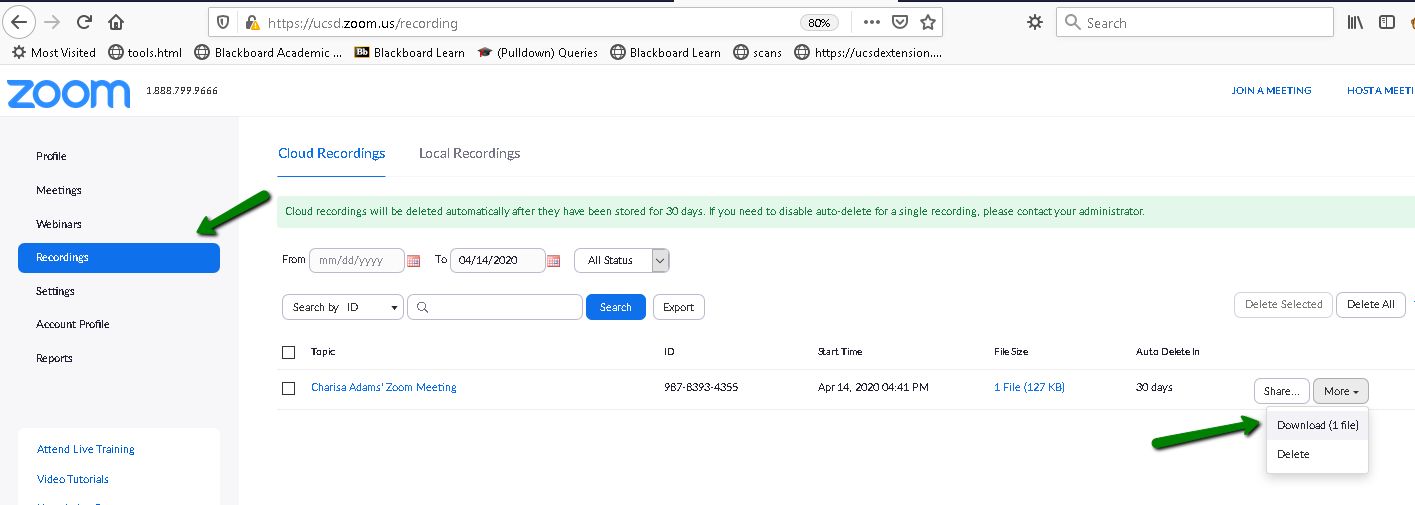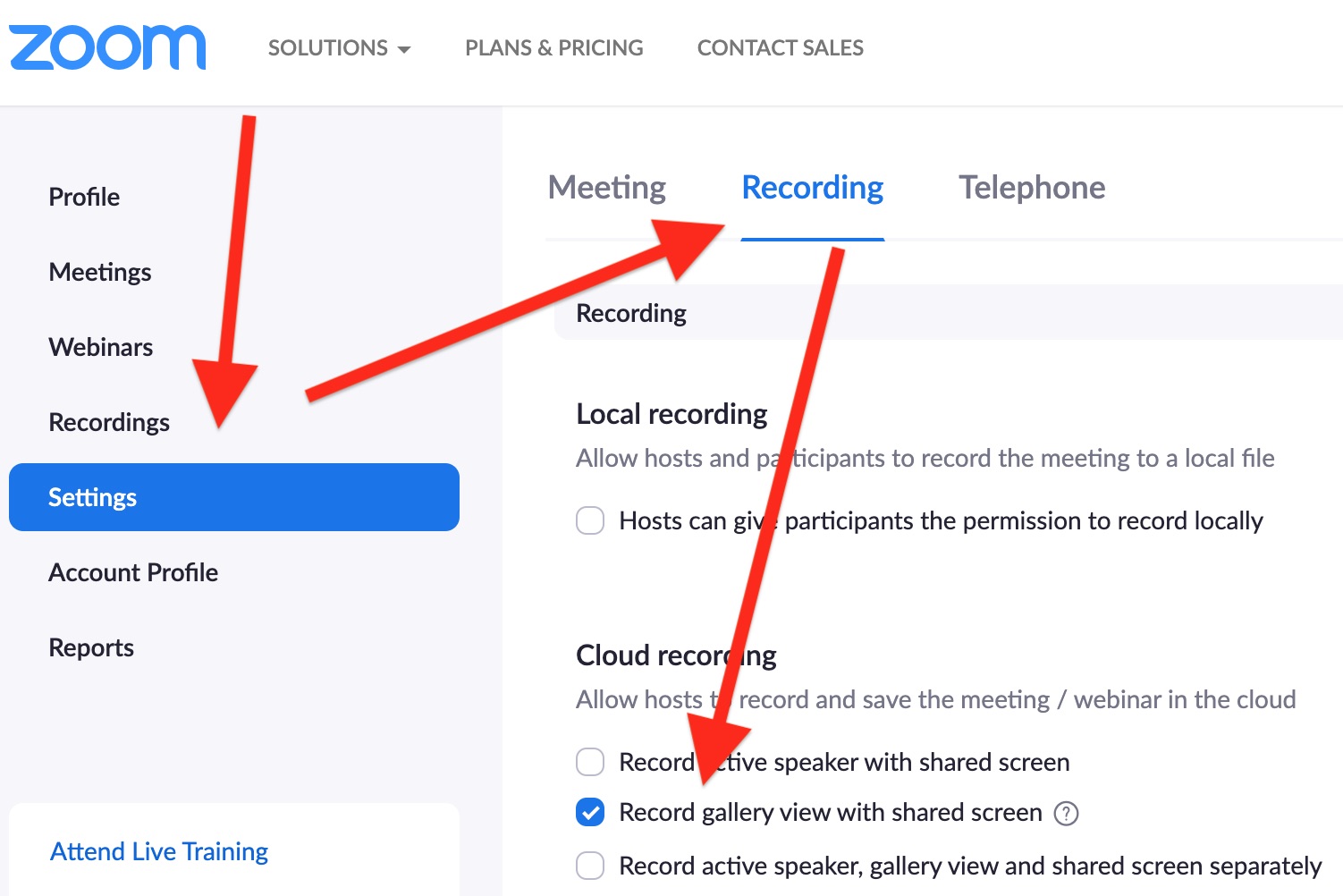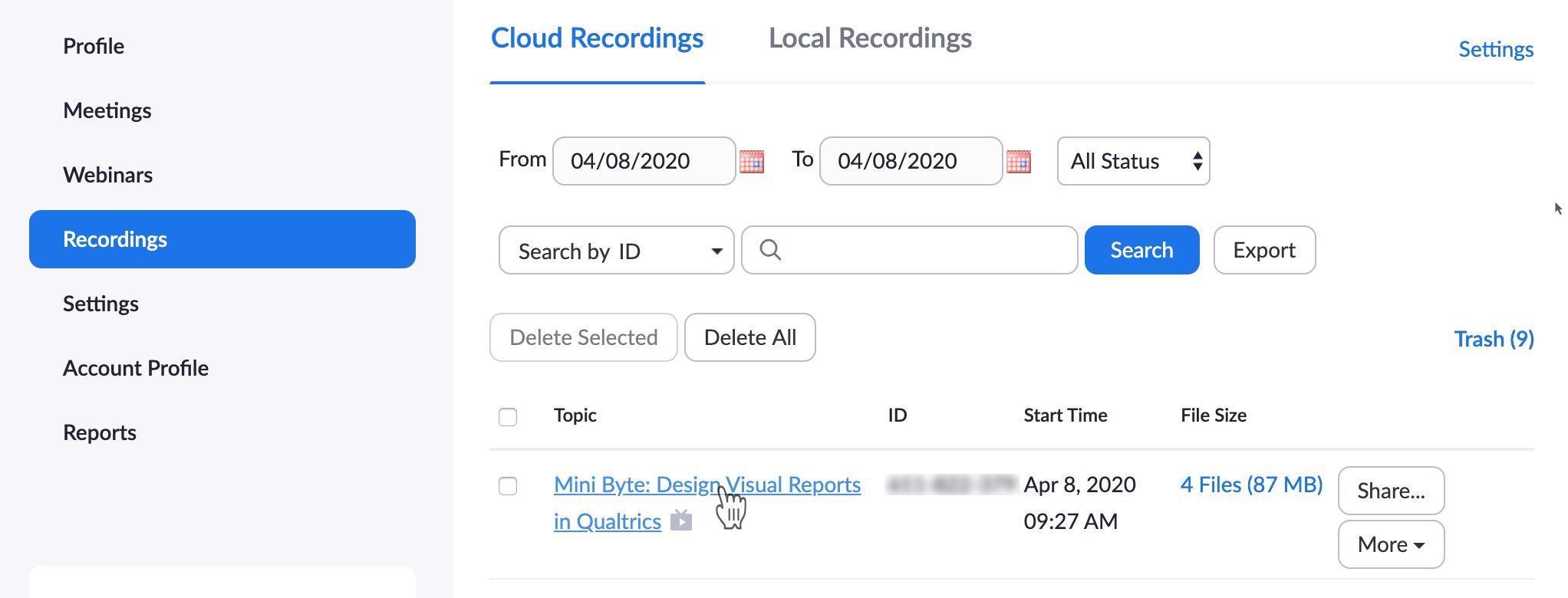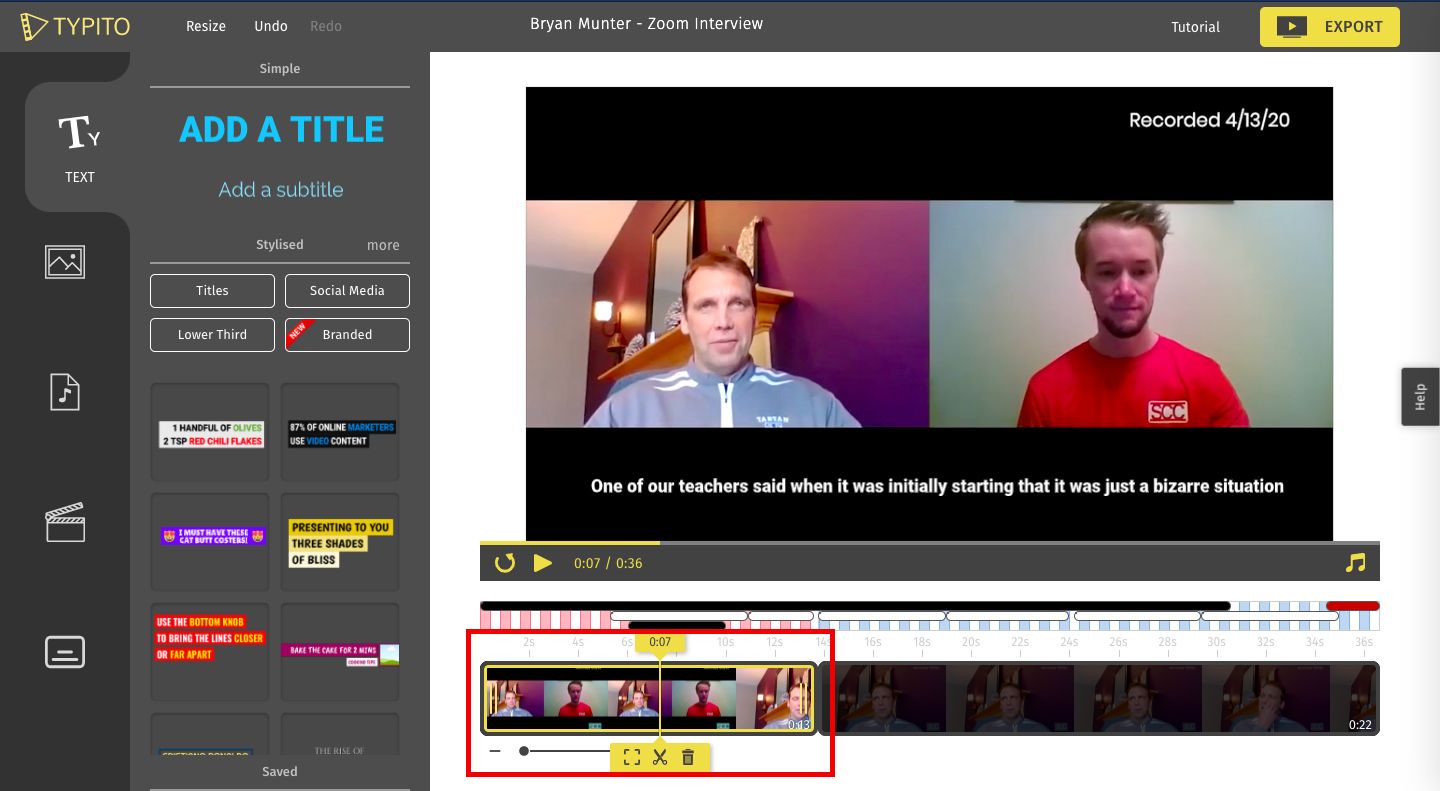Introduction
Welcome to this guide on how to download a recording from Zoom! Zoom is a popular video conferencing platform that allows users to host virtual meetings, webinars, and conferences. One of the great features of Zoom is the ability to record these sessions, allowing participants to refer back to important discussions or share the content with others.
Downloading a recording from Zoom is a straightforward process that can be done in just a few simple steps. In this guide, we will walk you through the process of accessing your Zoom recordings, locating the specific recording you want to download, and choosing the download location.
Whether you need to save a recording for future reference, share it with colleagues, or simply want to keep a backup for yourself, this guide will provide you with all the necessary steps to do so.
Before we get started, make sure you have a Zoom account and the necessary permissions to access and download recordings. Now, let’s jump right in and learn how to download your Zoom recordings!
Step 1: Accessing the Zoom website
The first step in downloading a recording from Zoom is to access the Zoom website. To do this, open your preferred web browser and navigate to https://zoom.us.
Once you’re on the Zoom website, you’ll be presented with the homepage, which provides an overview of the different features and services offered by Zoom. From here, you can explore various functionalities such as hosting meetings or joining existing ones. However, for the purpose of downloading recordings, we need to log in to our Zoom account.
If you already have a Zoom account, click on the “Sign In” button located at the top right corner of the page. This will take you to the login page where you can enter your Zoom credentials, including your username and password.
If you don’t have a Zoom account yet, click on the “Sign Up, It’s Free” button instead. This will guide you through the account creation process, where you’ll need to provide some basic information and set up your account.
Once you’re logged in to your Zoom account, you’ll have access to the various features and settings associated with your account. This includes the ability to manage your profile, schedule and host meetings, and of course, access and download your recorded sessions.
Now that you’re signed in to your Zoom account, it’s time to move on to the next step: navigating to the “Recordings” tab. Let’s explore that in the next section.
Step 2: Logging into your Zoom account
After accessing the Zoom website, the next step is to log in to your Zoom account. This will grant you access to all the features and functionalities associated with your account, including the ability to download your recordings. Here’s how you can log in to your Zoom account:
1. On the Zoom homepage, locate the “Sign In” button at the top right corner of the page. Click on it to proceed.
2. You will be redirected to the login page. Enter the email address associated with your Zoom account and your password in the respective fields.
3. Once you have entered your login credentials, click on the “Sign In” button to proceed.
4. If you have entered the correct credentials, you will be successfully logged in to your Zoom account. You will now have access to your account dashboard, where you can manage your profile, schedule meetings, and access your recordings.
It’s important to note that if you have enabled two-factor authentication for your Zoom account, you will need to complete the additional verification step before gaining access to your account. This adds an extra layer of security to protect your account from unauthorized access.
If you don’t have a Zoom account yet, you can easily create one by clicking on the “Sign Up, It’s Free” button on the Zoom homepage. This will guide you through the process of creating a new account using your email address or by signing in with Google or Facebook.
Now that you’re logged in to your Zoom account, it’s time to move on to the next step: navigating to the “Recordings” tab. Let’s explore that in the next section.
Step 3: Navigating to the “Recordings” tab
Once you’ve logged in to your Zoom account, the next step is to navigate to the “Recordings” tab. This is where you can access all your recorded sessions and choose which one you want to download. Here’s how you can find the “Recordings” tab:
1. After logging in, you will be directed to your account dashboard. Here, you will see various options and settings related to your Zoom account.
2. Look for the navigation menu on the left-hand side of the page. Scroll down until you find the “Recordings” tab. It is usually located under the “Meetings” or “Settings” section.
3. Once you find the “Recordings” tab, click on it to access your recorded sessions.
4. Depending on your account settings and permissions, you may see different types of recordings, such as cloud recordings or local recordings. Cloud recordings are stored on Zoom’s servers, while local recordings are saved on your computer or device.
5. If you have multiple meetings or webinars recorded, you can organize them by date, meeting ID, or topic for easier navigation. Simply click on the appropriate column header to sort the recordings accordingly.
By accessing the “Recordings” tab, you will be able to view a list of all your recorded sessions. Each recording will typically include information such as the date and time of the session, the duration, and the name of the host.
Now that you have successfully navigated to the “Recordings” tab, it’s time to move on to the next step: locating the specific recording you want to download. Let’s dive into that in the following section.
Step 4: Locating the desired recording
Once you have accessed the “Recordings” tab in your Zoom account, the next step is to locate the specific recording that you want to download. Zoom provides various options and filters to help you easily find the recording you are looking for. Follow these steps to locate your desired recording:
1. Look through the list of recorded sessions on the “Recordings” tab. The recordings are typically organized in chronological order, with the most recent ones appearing at the top.
2. If you have a large number of recordings, you can use the search bar or filters provided by Zoom to narrow down your search. Enter keywords or dates in the search bar to bring up recordings that match your query.
3. Zoom also provides additional filters to refine your search. These filters allow you to sort the recordings based on criteria such as date range, meeting topic, or host name. Identify the relevant filters that will help you locate the desired recording.
4. Once you have applied the necessary filters or conducted a search, review the list to locate the recording you want to download. Take note of the date, time, and any other identifying information that can help you identify the recording.
5. If you are still unable to locate the desired recording, make sure to check any subfolders or sections within the “Recordings” tab. Depending on your Zoom settings, there may be separate folders for cloud recordings, local recordings, or recordings from specific webinars or meetings.
By following these steps and using the filters and search options provided by Zoom, you should be able to quickly locate the specific recording you wish to download. Once you have found it, you are ready to move on to the next step: downloading the recording.
Step 5: Downloading the recording
After locating the desired recording in your Zoom account, the next step is to download it to your computer or device. Zoom provides a simple and straightforward process to download your recordings. Follow these steps to download your recording:
1. On the “Recordings” tab, find the specific recording you wish to download. Make sure you have selected the correct recording before proceeding.
2. Look for the “Download” option or icon associated with the recording. This is usually represented by a cloud download icon or a clickable link.
3. Click on the “Download” option or icon to initiate the download process.
4. Depending on your browser settings, you may be prompted to choose a location on your computer where you want to save the recording. Select a suitable folder or directory and click “Save” or “OK.”
5. The recording will begin downloading to the chosen location. The time it takes to download will depend on the size of the recording and the speed of your internet connection.
6. Once the download is complete, you will have successfully saved the recording to your computer or device.
7. Repeat the above steps for any additional recordings you wish to download.
It’s worth noting that downloads from the Zoom website are generally saved in an MP4 file format, which is widely compatible with various media players and devices. However, it’s always a good practice to check the file type and confirm that it is in a format that can be easily accessed and played on your device.
Congratulations! You have successfully downloaded your recording from Zoom. Now you can access it offline, share it with others, or keep it as a permanent record of your Zoom session.
Step 6: Choosing a download location
When you download a recording from Zoom, it is essential to choose a suitable download location on your computer or device. This ensures that you can easily locate and access the recording whenever needed. Here’s how you can choose a download location:
1. After initiating the download process by clicking on the “Download” option or icon, your browser may prompt you to select a location to save the recording. Choose a folder or directory where you want the recording to be saved.
2. If your browser does not prompt you to choose a download location, it will typically save the recording to the default downloads folder on your computer or device. You can either keep it in the default location or manually move it to a more appropriate folder later.
3. Consider creating a separate folder specifically for your Zoom recordings. This can help you keep all your recordings organized and easily accessible in one place. You can name the folder something like “Zoom Recordings” or “Meeting Archive” for easy identification.
4. Choose a location that has enough storage capacity to accommodate your recordings. If you have limited storage space, you may need to periodically transfer or delete older recordings to free up space for new ones.
5. If you are downloading recordings from different Zoom meetings or webinars, you might want to create additional subfolders within the main recording folder. This can help you categorize and distinguish recordings based on the meeting date, topic, or any other relevant criteria.
6. Remember to choose a location that is easily accessible and convenient for you. It could be a specific folder on your desktop, a dedicated external drive, or any other location that suits your preferences.
By deliberately choosing a suitable download location for your Zoom recordings, you can ensure that they are stored in an organized manner and readily accessible when you need them. Take a moment to consider the best download location for your recordings before proceeding with the download process.
Bonus tip: Customizing recording settings for future downloads
Customizing your recording settings in Zoom can enhance your future download experience and make it more efficient. By adjusting the settings to meet your specific needs, you can save time and ensure that your recordings are saved in the desired format and location. Here are some tips for customizing your recording settings:
1. Access your Zoom account settings by clicking on your profile picture or initials in the top right corner of the Zoom homepage. From the drop-down menu, select “Settings.”
2. Navigate to the “Recording” tab in your account settings. This is where you can modify various settings related to your recordings.
3. Choose your preferred recording format. Zoom provides options to record meetings in MP4 or M4A format. MP4 is a video format that includes both audio and video components, while M4A is a audio-only format. Select the format that suits your needs.
4. Decide whether you want to record video and audio, or just audio. If you only need the audio from your meetings, you can save storage space by selecting the “Record audio only” option.
5. Consider enabling the option to automatically transcribe your recordings. This can be useful if you want to have a written transcript of your meetings for reference or accessibility purposes. Zoom provides an automated transcription service that can transcribe your recordings into text.
6. Customize the default download location for your recordings. By specifying a desired folder or directory, future downloads will be saved directly to that location without needing to manually choose a folder every time.
7. Take advantage of the advanced options such as recording passwords or enabling encryption for added security. These settings can help ensure that your recordings are protected and accessible only to authorized individuals.
Remember to save your customized settings after making any changes to ensure they are applied to your future recordings. By customizing your recording settings, you can streamline the process of downloading recordings and tailor it to fit your specific preferences.
Now that you’ve learned how to customize your recording settings in Zoom, you can make the necessary adjustments for your future downloads and have a more personalized and efficient experience.
Conclusion
Downloading a recording from Zoom is a simple process that allows you to save and access your important meetings, webinars, and conferences. By following the steps outlined in this guide, you can successfully download your recordings and have them readily available for future reference or sharing.
We started by accessing the Zoom website and logging into our Zoom accounts. Then, we navigated to the “Recordings” tab and located the desired recording. After that, we downloaded the recording to our preferred location on our computer or device. We also provided a bonus tip on customizing recording settings for future downloads, which can further enhance your workflow.
Remember, it is crucial to properly organize and choose a suitable download location for your recordings to ensure easy access and efficient management. By customizing your recording settings, you can tailor the download process to meet your specific needs and preferences.
Whether you need to refer back to important discussions, share the recording with colleagues, or keep a backup for yourself, downloading recordings from Zoom provides you with the flexibility and convenience to do so.
Now you have the knowledge and tools to download your Zoom recordings. Start exploring the possibilities and make the most out of the valuable content that you and your team have created during your Zoom sessions.
Happy downloading!







